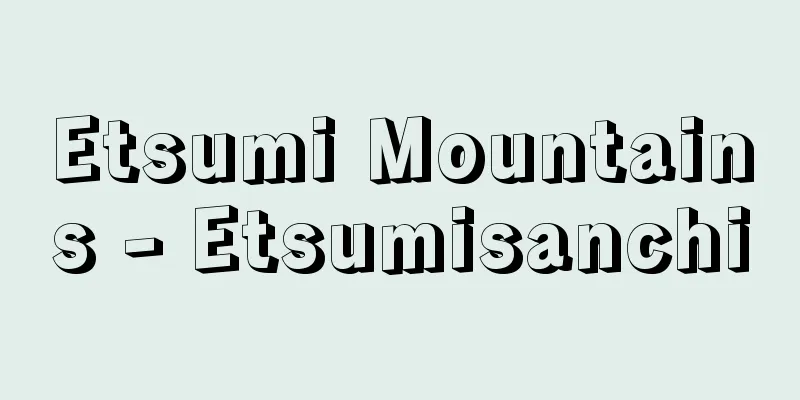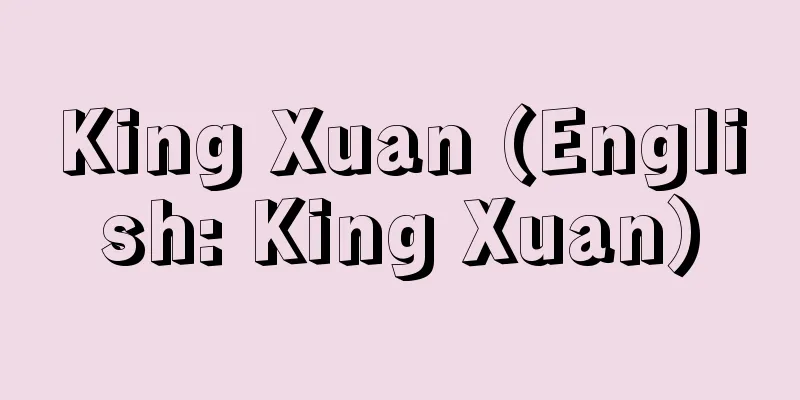Governor - Kokushi

|
A general term for local officials who were dispatched from the central government under the Ritsuryo system to carry out government affairs in each province. Later, the term came to refer only to the chief official. It was established as part of the local government reforms of the Taika era, and the system was completed with the establishment of the Taiho Code. Early kokushi were called mikotomochi and written as sai or shisha. It was only after the Taiho Code was enacted that the character kokushi was used to refer to these officials. According to the Ritsuryo system, the number of officials of the four ranks of kami, suke, jo and sakan, as well as historians, was set according to the rank of the province, and their duties covered all aspects of local politics, including administration and finance, justice and the military. The term of office was initially six years, later shortened to four years, but during the term of office they were given economic privileges that central government officials did not have, such as the allocation of official fields, the right to cultivate seed on vacant land, and an allocation of public rice.As a result, with the decline of the Ritsuryo system, becoming a kokushi came to be seen as a type of source of income, and systems such as annual salaries, succession awards, repeated commissions, and long-term commissions came into being. After the 10th century, in order to respond to the instability of the Ritsuryo system and the changes in the local structure, the powers that had been held by those below the Gunji class were absorbed into the hands of the Kokushi, and control over the Kokuga was significantly strengthened. However, with the intensification of anti-Kokuga struggles by Gunji and peasants and the formation of medieval-style fiefs, the Zaichokanjin system was established as a medieval system of control over the Kokuga, and the term Kokushi came to refer only to the chief official who commanded them in the capital. With the establishment of this Rusudokoro system and the development of the Chigyokoku system, it can be said that Kokushi came to occupy a position similar to that of a manor lord. The title of Kokushi in national politics continued to exist as a kind of title even after the dissolution of the medieval manor system until the Meiji Restoration. [Kanji Inoue] "Study on the Collapse of the Kokushi System" by Shigeki Yoshimura (1957, University of Tokyo Press) " "The Theory of the Japanese Dynastic State System" by Shozo Sakamoto (1972, University of Tokyo Press) [Reference] |Source: Shogakukan Encyclopedia Nipponica About Encyclopedia Nipponica Information | Legend |
|
令制(りょうせい)により、中央から派遣されて諸国の政務を行った地方官の総称。のちには長官のみをさすようになった。大化の地方制度改革の一環として成立し、大宝令(たいほうりょう)の制定によって制度的完成をみた。初期の国司はミコトモチとよばれ、宰、使者などと記された。これに国司の字をあてるのは大宝令施行以後のことである。令制によれば、国の等級に応じて守(かみ)、介(すけ)、掾(じょう)、目(さかん)の四等官(しとうかん)と史生(ししょう)の定数が定められており、その職掌は行財政、司法、軍事など地方政治全般に及んでいた。任期は当初6年、のち4年となったが、任期中は職分田(しきぶんでん)の支給をはじめ、空閑(こかん)地の営種(えいしゅ)権や公廨稲(くがいとう)の配分など、中央官吏にない経済的特典が付与されていたため、律令制の衰退に伴って国司になることが一種の収入源とみなされ、年給(ねんきゅう)、成功(じょうごう)、重任(ちょうにん)、遙任(ようにん)などの制が生じた。 10世紀以後、律令制支配の動揺と在地構造の変化に対応すべく、かつては郡司(ぐんじ)層以下の有していた権限が国司の手に吸収され、国衙(こくが)支配権が著しく強化された。しかし、郡司、百姓らによる反国衙闘争の激化や中世的所領の形成を契機として、中世的な国衙支配体制としての在庁官人制が成立し、国司は都にあってこれを指揮する、その長官のみをさすようになった。この留守所(るすどころ)制の成立および知行国(ちぎょうこく)制の展開に伴って、国司は荘園(しょうえん)領主的地位を占めることになったといえる。国政上の国司の名称は、中世の荘園制解体後も一種の称号として、明治維新まで存続した。 [井上寛司] 『吉村茂樹著『国司制度崩壊に関する研究』(1957・東京大学出版会)』▽『坂本賞三著『日本王朝国家体制論』(1972・東京大学出版会)』 [参照項目] |出典 小学館 日本大百科全書(ニッポニカ)日本大百科全書(ニッポニカ)について 情報 | 凡例 |
Recommend
Payment method - Nousengata
A private group that was a vassal of the Mandokor...
Tendril (English spelling)
A special modification of a plant that cannot stan...
Sergio Corazzini
Italian poet. Born in Rome. A representative figu...
Gazette of Yongzhou
A geography book of Yamashiro Province (central a...
Squamous cell carcinoma
...Because skin cancer is visible, it is often tr...
Synchronicity
…CG Jung believed that a transcendental dimension...
《Mask/Persona》
…He became known worldwide for Monica (1952), and...
American bighorn sheep
…Also called bighorn sheep, it is a sheep with la...
qaṣr (English spelling) qasr
…(4) Tombs (qubba, gunbad, türbe, mashhad): These...
Xuan-zheng-yuan (English: Xuan-zheng-yuan; Hsüan-chêng-yüan)
A special central government office in China that ...
Sherlock Holmes
Holmes is an amateur detective who first appeared ...
Ontology
A branch of philosophy that deals with existence ...
Compulsory hospitalization - compulsory hospitalization
… [Basic structure] As stated in Article 1, this ...
Kalibangan (English spelling)
The ruins of a city from the Indus Valley Civiliza...
RADAG
...This method is used in the American cruise mis...







![Kumenan [town] - Kumenan](/upload/images/67cb6c6208d3b.webp)

